“Nexus” is a Latin term that means connection. In terms of determining exposure to state and local taxes, states will generally impose tax on a business if that business has nexus with the state. Determining the existence of nexus is complicated in that there is no one uniform rule across all states to apply. Each state has its definition of nexus and its own rules. Almost always, physical presence will create nexus. Physical presence is established in states where employees and third-party contractors are working; inventory is physically located, or another personal or real property (rented or owned) is physically located.
While physical presence by a business is most certainly a factor in determining whether that business is subject to tax in a particular state, nexus issues have become more complex in recent years as many states have adopted an economic nexus standard in addition to the previously established substantial physical presence standard. Economic nexus standards have been adopted by over 30 states, resulting in a significant source of tax revenue for these states. The adoption of these economic nexus standards is driven by the U.S. Supreme Court decision in the South Dakota v. Wayfair case in June 2018. Examples of economic presence relate to in-state sales or gross revenue in excess of certain thresholds or a specific number of sale transactions occurring within the state. The sales and transaction thresholds vary by state.
There are a number of nexus-related issues that impact the pharmaceutical and life sciences industry. As an example, economic nexus can be established based on the presence of intangible property in a state, including the licensing of trademarks and patents. Additionally, using third-party clinical research organizations (CROs) to conduct independent clinical trials of drugs under development or to discover new medical uses for marketed drugs may create nexus. Although many CROs work independently from the pharmaceutical company that hires them, many times the pharmaceutical company retains title to the drugs being tested. In this case, many states would likely consider the pharmaceutical company to have nexus in the state in which the CRO operates due to the retained ownership of the drugs. Although there is no bright-line test for CROs currently, the Massachusetts Tax Board, in Genentech Inc. v. Commissioner, found the taxpayer’s ownership of tested materials created nexus in the state of the CRO.
The life cycle of pharmaceutical and life sciences companies includes various stages, many of which are pre-revenue. The existence of nexus creates the need for additional tax filings, regardless of whether the company is profitable. Pharmaceutical and life science companies need to analyze the existence of nexus in their early stages when they are generating tax losses. Many states allow companies with net operating losses to carry those losses forward to offset future profits, but only if tax returns reflecting those losses are filed. Pharmaceutical companies must pay attention to nexus in the early stages prior to commercialization and profitability so they can capture any net operating losses that may benefit them in the future. In addition, some states provide research tax credits or other benefits to attract R&D activity to their state, thus providing another reason to ensure that the state tax footprint is considered early in a company’s life cycle.
As you can see, state income tax nexus is a complicated area requiring a keen understanding of the rules and how they apply to the business activities of a company. Failure to analyze these rules may result in penalties for late filings and lost savings from failure to carry forward losses. While understanding the applicability of these rules can be a time-consuming process, many of the issues caused by not addressing them are often raised during a due diligence process when a company is being sold or an investor is trying to invest. The longer the issues are outstanding, the harder they are to fix. Please consult your WG tax advisor’s help in evaluating whether and where state tax nexus has been created.





